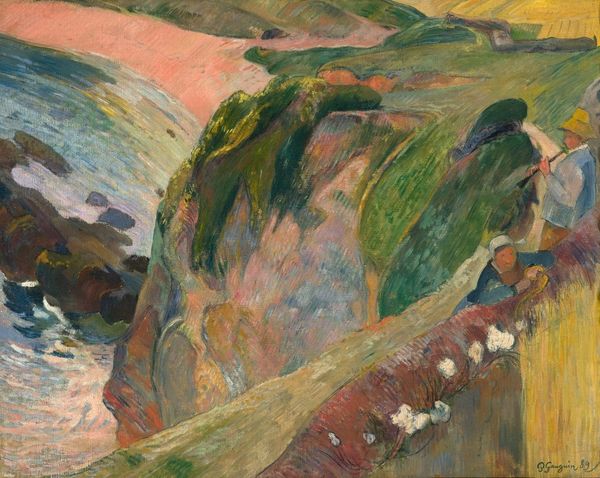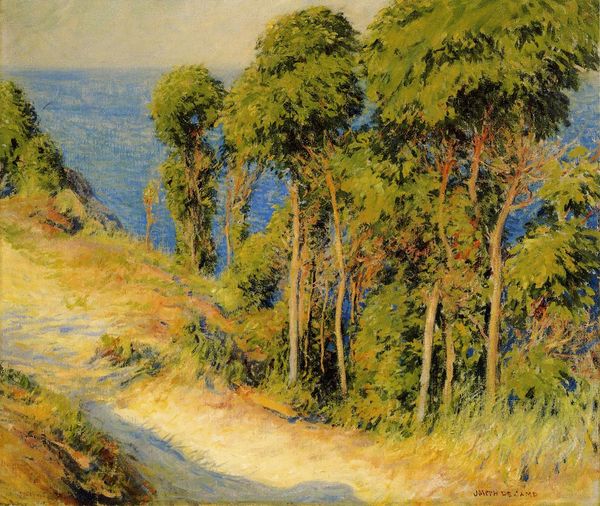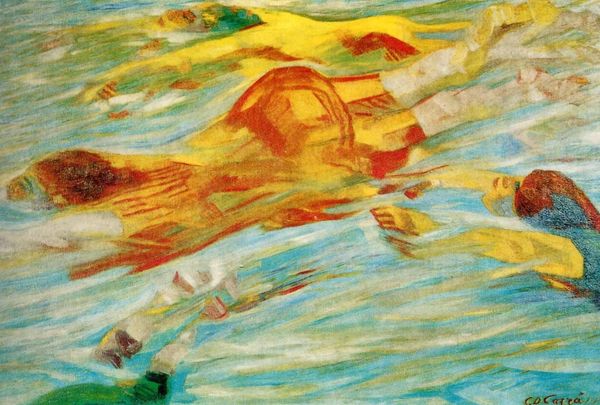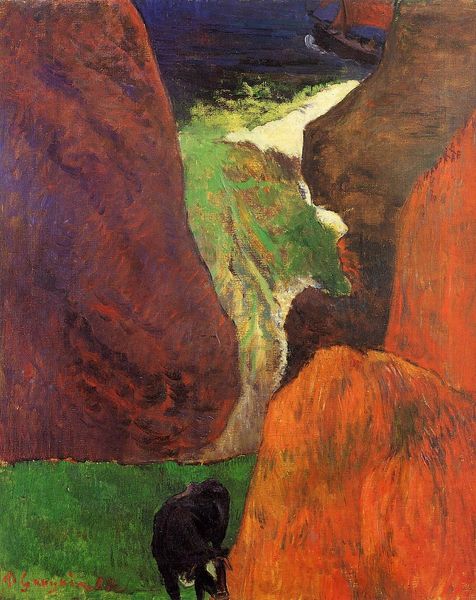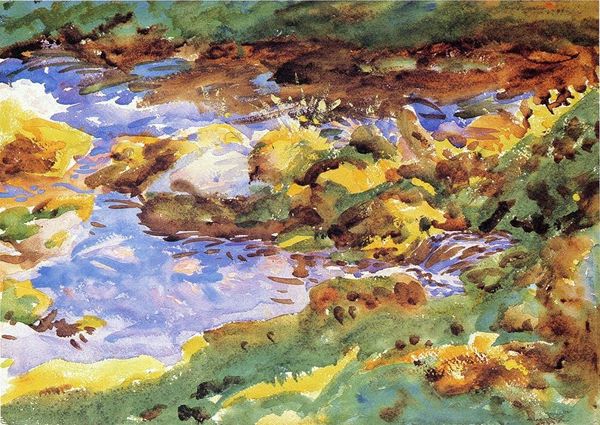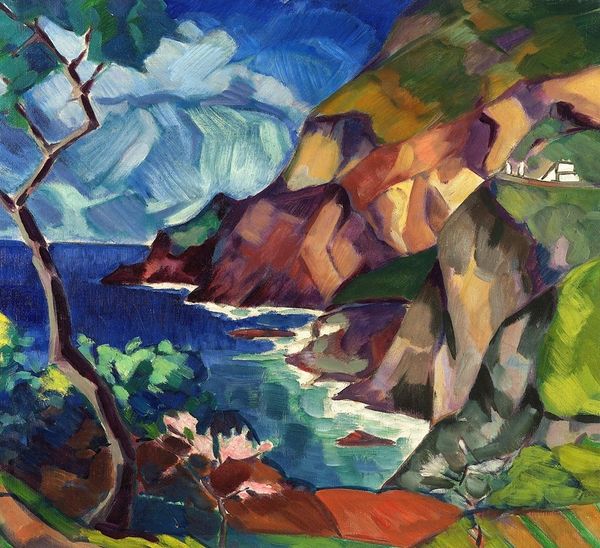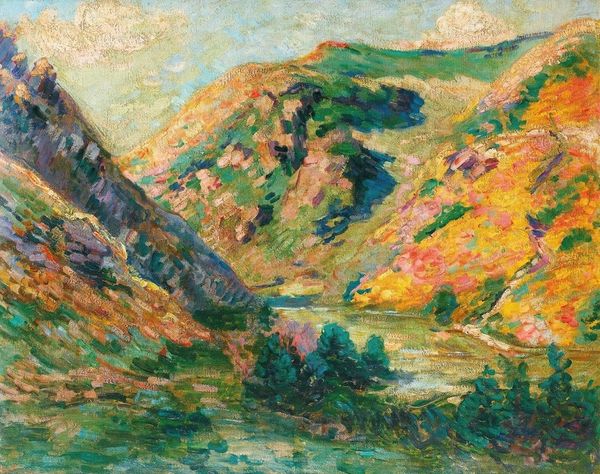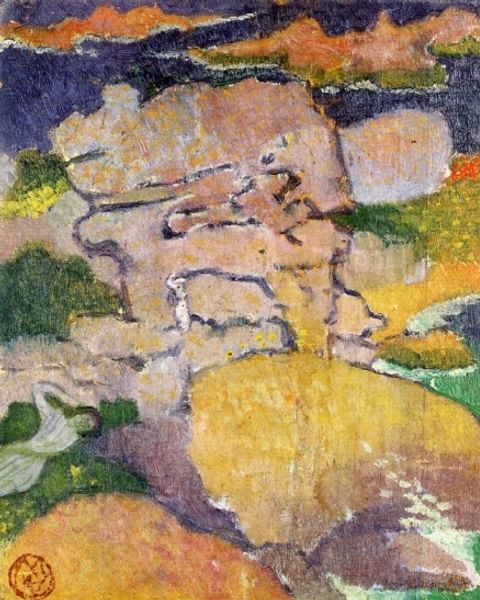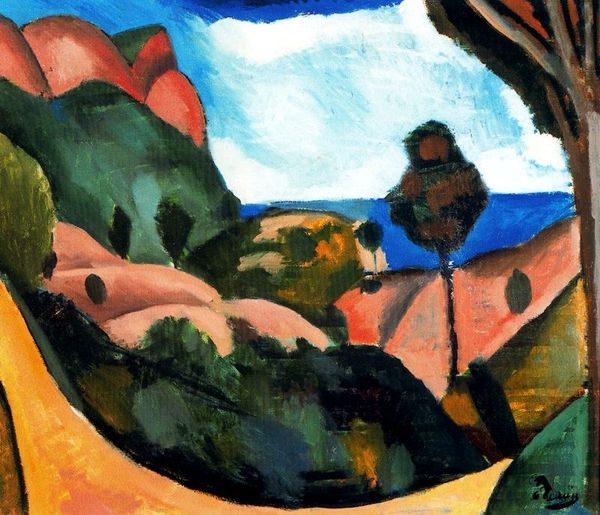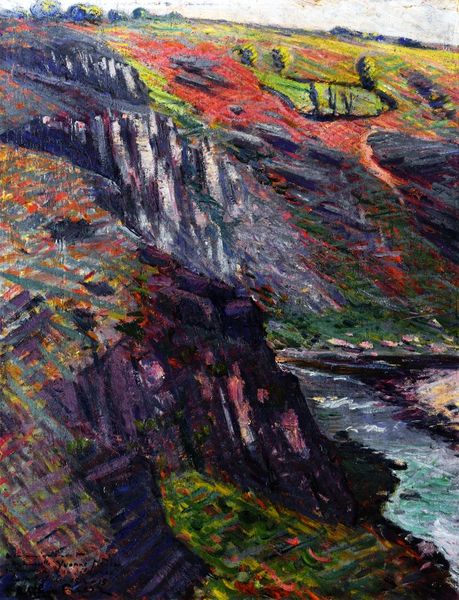
plein-air, oil-paint, impasto
#
cliff
#
plein-air
#
oil-paint
#
landscape
#
impressionist landscape
#
oil painting
#
impasto
#
rock
#
water
#
symbolism
#
post-impressionism
Copyright: Public domain
Curator: This is Paul Gauguin's "The Creek, Le Pouldu," painted in 1889. He spent a significant period in Brittany during this time. The region's landscapes and local culture profoundly impacted his artistic development, shifting him away from impressionism towards a more symbolist style. Editor: Immediately, the intensity of the ochre and orange grabs my attention. The heavily applied paint—the impasto—gives the rocks this wonderfully tactile quality, almost like you could reach out and feel their rough surfaces. It's so far from traditional landscape painting. Curator: Indeed. This work exemplifies Gauguin's move towards synthetism. He sought to capture the essence of a subject through simplified forms, flattened perspective, and these very vibrant, non-naturalistic colors. It’s less about directly representing what he saw and more about expressing an emotional response to it. He felt constrained by impressionism's focus on optical realism, desiring art with greater psychological depth. Editor: That emotional depth comes through. Look how the darker, almost bruised, purples and greens of the water contrast with those fiery cliffs. It creates a tension, a sort of quiet drama. The lone boat in the distance only accentuates the painting's feeling of solitude and contemplation. What would you say drove Gauguin to isolate himself like this? Curator: He felt stifled by Parisian art circles and the burgeoning industrial culture. Brittany offered him an escape, a return to a supposedly simpler, more authentic way of life. Though, we must remember that his romanticized vision of Brittany often overlooked the complexities and realities of Breton society. His art, while powerful, reflects a selective perspective influenced by his own biases and yearnings. It is, at its root, the output of colonial fantasies of escape. Editor: A crucial reminder that even depictions of "untouched" nature are steeped in cultural perspectives. Considering that tension, do you believe this particular composition, in its intense expression, served to prefigure his later move to Tahiti? Curator: Certainly, Le Pouldu acted as an artistic springboard. The simplification of form, the use of evocative color, and the quest for the primitive that was not primitive at all, paved the way for his Polynesian works, despite his complex and at times exploitative relationship with those communities. Editor: It seems his quest for something "pure" was deeply fraught. This artwork helps to contextualize his journey towards the overtly orientalist paintings we often see him known for today. I can almost see Tahiti through the stylistic elements present here, albeit nascent, within the Breton landscape. Curator: Absolutely. I find reflecting on this moment in his artistic trajectory reminds me that what he was looking for was nothing more than his own creation. It can be very difficult to remove an individual artist from these narratives.
Comments
No comments
Be the first to comment and join the conversation on the ultimate creative platform.


